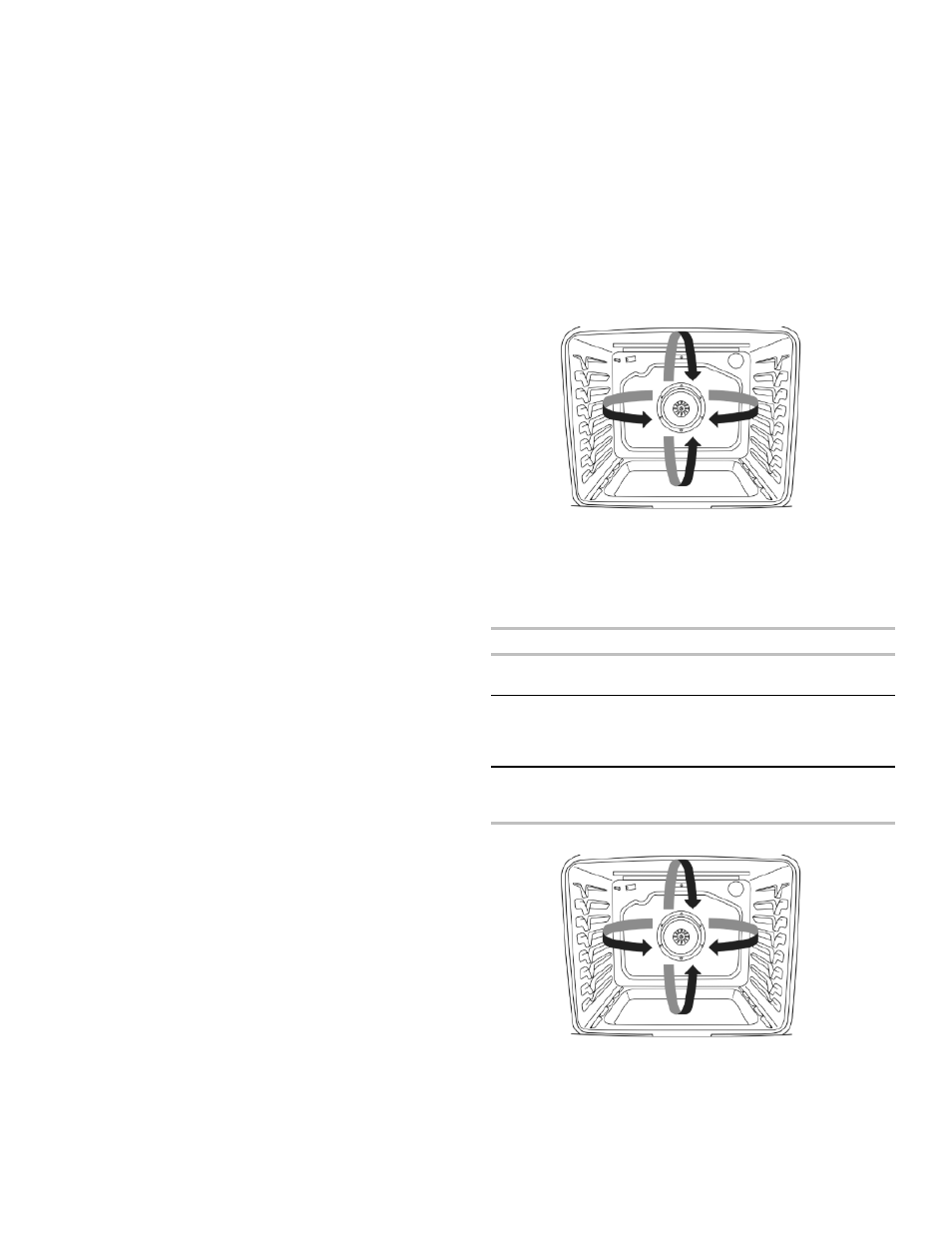Baking and roasting_w11122568, Broiling_w11122599, Convection cooking_w11122599 – KITCHENAID 30 Inch Freestanding Gas Range Control Guide Manuel d'utilisation
Page 8: Baking and roasting, Broiling, Convection cooking

8
Three-rack (convection): Use a flat rack in rack positions 4 and 6
and a Max Capacity Oven Rack in rack position 3.
Baking and Roasting
Preheating
When beginning a Bake, Convect Bake, or Convect Roast cycle,
the oven will begin preheating after Start is pressed. The oven will
take approximately 12 to 15 minutes to reach 350°F (177°C) with
all of the oven racks provided with your oven inside the oven
cavity. Higher temperatures will take longer to preheat. The
preheat cycle rapidly increases the oven temperature. The actual
oven temperature will go above your set temperature to offset the
heat lost when your oven door is opened to insert food. This
ensures that when you place your food in the oven, the oven will
begin at the proper temperature. Insert your food when the
preheat tone sounds. Do not open the door during preheat before
the tone sounds.
Oven Temperature
While in use, the oven elements will cycle on and off as needed to
maintain a consistent temperature, but they may run slightly hot or
cool at any point in time due to this cycling. Opening the oven door
while in use will release the hot air and cool the oven which could
impact the cooking time and performance. It is recommended to
use the oven light to monitor cooking progress.
NOTE:
On models with convection, the convection fan may run in
the non-convection bake mode to improve oven performance.
Temperature Management System
The Temperature Management System electronically regulates
the oven heat levels during preheat and bake to maintain a
precise temperature range for optimal cooking results. The bake
and broil elements or burners cycle on and off in intervals. On
convection range models, the fan will run while preheating and
may be cycled on and off for short intervals during bake to provide
the best results. This feature is automatically activated when the
oven is in use.
Before baking and roasting, position racks according to the
“Positioning Racks and Bakeware” section. When roasting, it is
not necessary to wait for the oven preheat cycle to end before
putting food in unless it is recommended in the recipe.
Broiling
No preheating is necessary, unless recommended otherwise in
the recipe. Position food on grid in a broiler pan, and then place it
in the center of the oven rack.
IMPORTANT:
Close the door to ensure proper broiling
temperature.
Changing the temperature when Custom Broiling allows more
precise control when cooking. The lower the broil setting, the
slower the cooking. Thicker cuts and unevenly shaped pieces of
meat, fish and poultry may cook better at lower broil settings. Use
racks 6 or 7 for broiling. Use rack position 6 if using the roll-out
rack. Refer to the “Positioning Racks and Bakeware” section for
more information.
�
For best results, use a broiler pan and grid. It is designed to
drain juices and help avoid spatter and smoke.
If you would like to purchase a broiler pan, one may be
ordered. Please refer to the Quick Start Guien for more
information.
NOTE:
Odors and smoke are normal the first few times the oven
is used or if the oven is heavily soiled.
Convection Cooking
In a convection oven, the fan-circulated hot air continually
distributes heat more evenly than the natural movement of air in a
standard thermal oven. This movement of hot air helps maintain a
consistent temperature throughout the oven, cooking foods more
evenly, crisping surfaces while sealing in moisture and yielding
crustier breads.
During convection cooking, the bake and broil burners, convection
(true convection only) element and fan cycle on and off in intervals
to maintain the oven temperature, while the fan circulates the hot
air.
NOTE:
The convection fan will turn on approximately 5 minutes
into any convection cycle.
If the oven door is opened during convection cooking, the fan will
turn off immediately. It will come back on when the oven door is
closed.
NOTE:
The oven door must be closed for convection broiling.
Position the racks according to the “Positioning Racks and
Bakeware” section before starting convection cooking.
With convection cooking, most foods can be cooked at a lower
temperature or at a shorter time. These adjustments can be made
using the following chart or by using the EasyConvect
™
Conversion feature on your range.
Setting
Guidelines
CONVECT
BAKE
Reduce the standard baking temperature 25°F
(15°C).
CONVECT
ROAST
Use standard recipe temperature. Cooking time
may be reduced by 15% to 30% with Convect
Roast so the food should be checked for
doneness early.
CONVECT
BROIL
Use standard recipe temperature. Cooking time
may be reduced so the food should be checked
for doneness early.
Bow Tie True Convection with T.H.E.
™
Element
True convection adds an electric element around the convection
fan to enhance the cooking performance. This feature enables
three-rack baking in your range. Use the following Convect
Options chart as a guide.